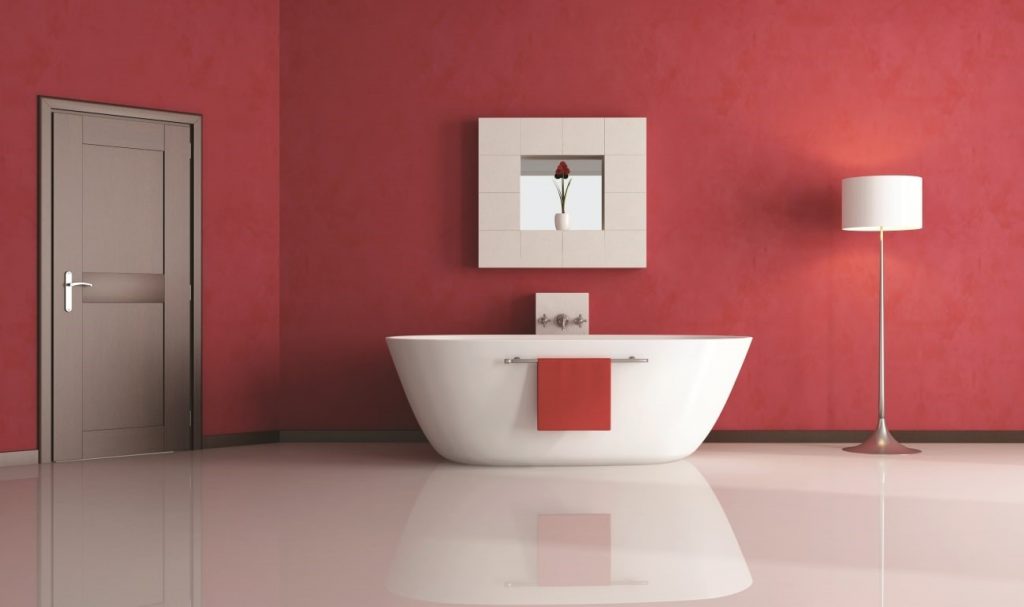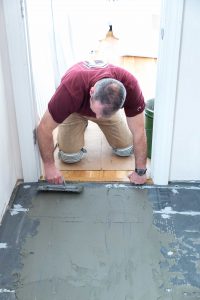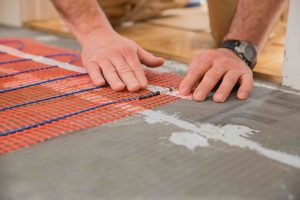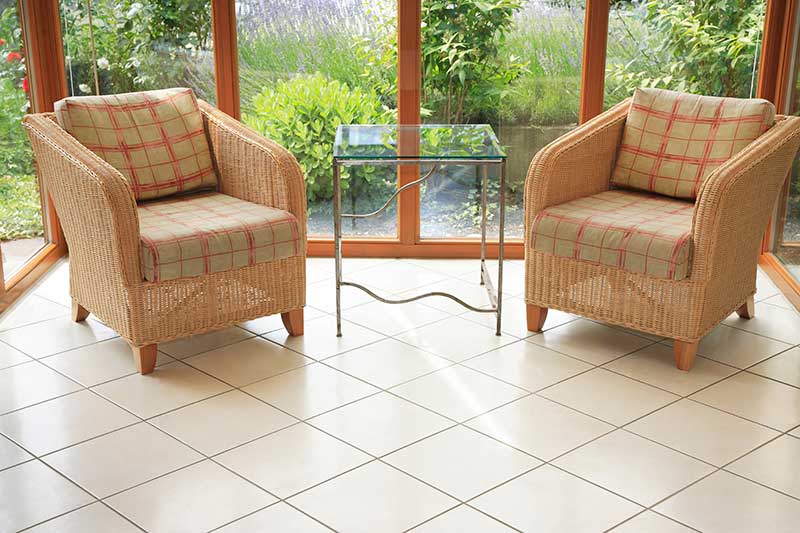As floor heaters are installed directly beneath your floor finish, there may be some impact to floor heights but in many cases, this floor build-up will be unnoticeable, as the heater can be installed directly within a layer of tile adhesive or fitted directly into the subfloor itself. If you’re adding floor heating as part of a renovation project, consider installing one of Warmup’s low-profile electric systems, many of which won’t raise your floor at all.
In this guide, we’ll answer all your questions about the impact of a floor heater on floor build-up levels and we’ll review the depths of Warmup’s range of electric and water systems, exploring which heaters are best for your project’s requirements. While Warmup water systems are not sold at this time in North America, we hope this complete comparison will answer any questions that you may have.
Why underfloor heating may add to the floor height
When considering an electric or water floor heating system for your home, remember that the heater itself will have little impact on raising your floors but its system-specific installation techniques, such as layers of insulation, leveling compound or thinset, can add to the floor build-up height. However, these layers are necessary even if you’re just simply changing the floor finish.
Electric systems thickness
Electric underfloor heating systems are typically slimmer than water systems, having less of an effect on floor build-up. Electric heaters are available as either heating mats or heating wire-based systems, both variants often being only a few millimeters thick. Some electric heaters can be installed within the layer of thinset, tile adhesive or leveling compound used to fit your floor covering, meaning the system will not raise your floors.
Hydronic systems thickness
Water systems, also known as hydronic systems, utilize heating pipes and frequently require a deeper installation, sometimes being submerged in the concrete subfloor itself, which helps distribute the heat into the room evenly. However, Warmup also offers low-profile water floor heaters that can be installed ‘dry’ – without the need for a concrete pour. Both electric and water systems are recommended to be installed with appropriate levels of insulation, which can also have an impact on flooring build-up.
How thick is floor heating insulation?
Insulation is important to install alongside an underfloor heating system as insulation helps the heater perform at its most efficient by greatly reducing heat loss. Our Insulation Boards are recommended for use with most of our electric systems and are ¼” thick. For water systems, insulation typically comes inbuilt or with accompanying insulation panels, which are available in depths ranging from 16mm to the thickest 100mm EPS Insulation Boards.
Flooring Heights in a Renovation Project
Unlike a new-build project, certain elements like doors, windows and ceiling heights are fixed in a renovation project, so if you’re considering adding floor heat in your existing home, a low-profile floor heater that won’t raise floor heights will be the most suitable option.
What’s the best low-profile electric system for my project?
Our Stickymat System uses the thinnest heating wire on the market, at only 1/8” thick, it can be installed directly within a layer of tile adhesive with no impact on floor heights. The mesh design features self-adhesive backing strips, so a separate adhesive is not needed to attach the heater to the subfloor thereby minimizing the floor build-up even more.
The popular DCM-PRO System is only ¼” thick total, cable and membrane. As a suitable substitute for many backer boards or sometimes mud jobs, the system can install more quickly and easily at the same height to meet height requirements during new-build or renovation projects with great anti-fracture benefits.
Our Foil Heater offers a ‘dry’ installation under floating floors with no need for adhesives or leveling compounds. When installed alongside its accompanying Insulated Underlay the system totals only 3/8”.
What’s the best low-profile hydronic system for my project?
While we do not sell hydronic systems in North America, to put height into perspective the Total-16 System by Warmup UK has been specifically designed to have as little impact on floor build-up heights as possible. It offers a system depth of just 16mm, making it the ideal water underfloor heating system for all kinds of renovation projects.
Flooring heights in a new-build project
New-build projects allow for a deeper installation of an underfloor heating system as you can take the heater’s dimensions into account during the architectural planning stage. This means if you’re building your dream home you can define the ceiling heights by the thickness of your chosen floor heating, therefore you do not have to worry about the impact of a heater on flooring build-up.
Hydronic systems are typically recommended for new-build projects. Many of these require a layer of concrete to encompass the system, something that wouldn’t be suitable for renovation projects due to their necessary depths.
You may also be interested in:






